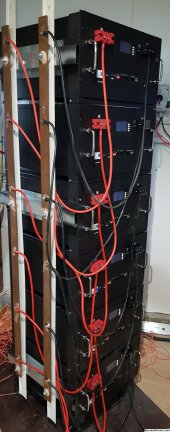CaliSunHarvester
Solar Enthusiast
I am looking to build a tower of 4 rack batteries and would like 2 bus bars vertically installed left and right. When searching for bus bars, I can only find products that are maybe 8 inches long.
Where can I buy something like 30 or 40 inches long (matching the combined battery height)?
Make it myself from a copper grounding rod?
.
Thanks in advance
Where can I buy something like 30 or 40 inches long (matching the combined battery height)?
Make it myself from a copper grounding rod?
.
Thanks in advance



